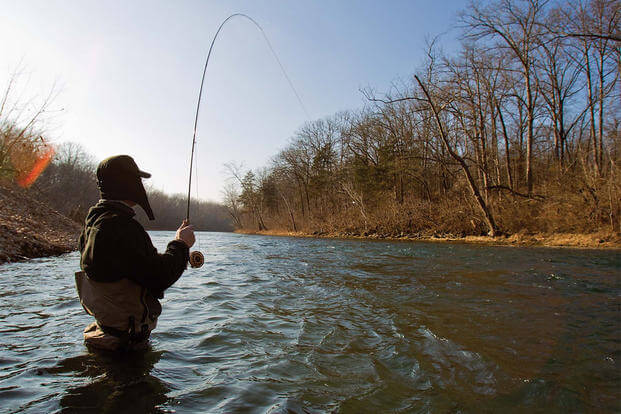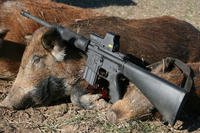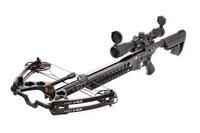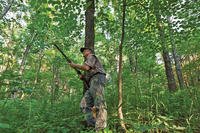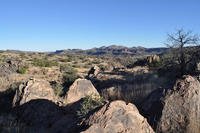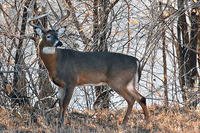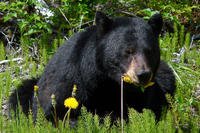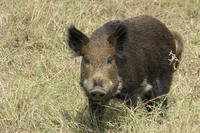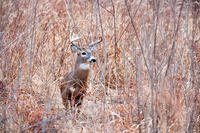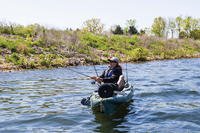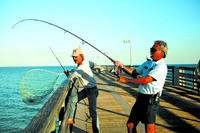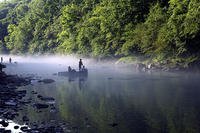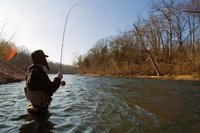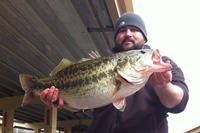Fly fishing enthusiasts across the country have their favorite fishing holes. Some are highly competitive and some are secrets only known by insiders. Until recently, only insiders knew about the best tailwaters to fly fish for trout in the Southeast, an uncommon association with cold-water fish like rainbow, brook and brown trout. This top 10 list busts open the popular waters for all anglers to see and fish.
10. Strong River
Outside of D’Lo, Miss. the Strong River flows south through old Choctaw lands. The river is best known for its dry fly fishing of bass, bream and blue and channel catfish.
Floating the Strong River in a canoe or float boat is the best option for anglers since it’s too shallow for wade fishing and the trees hang too low for bank fishing.
According to Chris McPhail, D’Lo Water Park manager and avid fly fisherman, top water poppers, such as Wooly Buggers, are the way to go, but nothing bigger than a size six hook.
The Strong River holds the number 10 spot because it’s a change of pace for the cold water trout enthusiast and a great spot to bring young anglers to learn the sport in calm waters.
9. Caney Fork
Reliable insect hatches and high oxygen levels, thanks to the U.S. Army Corps of Engineers gold sluicing, make the Caney Fork tailwater of Center Hill Lake in Tennessee a haven for dry fly fishing. The Center Hill Dam keeps the river a cool 55 degrees for trout fishing and harvesting all year.
Expect to use small flies like midges and sow bugs during inactive feeding times and top water popping bugs during active rises. Anglers can fish the river bankside, floating or wading. Public access points include Happy Hollow, Betty’s Island and at the dam according to a report by the Tennessee Wildlife Resources Agency. Regulations on trout harvesting since 2004 have significantly improved rainbow and brown trout weight and size giving the Caney Fork an edge against competing tailwaters in Tennessee and a reason for anglers to plan their next trip to the little-known tailwater.
8. Sipsey Fork
Alabama’s only cool water trout fishery brings anglers from all over the Southeast to this fork of the Black Warrior River.
Mike Key of Sipsey Fork Outfitters reports that the trout are stocked from a north Tennessee hatchery, but are large and still present a nice challenge for experienced anglers.
“It’s amazing to me how these fish raised in hatcheries have such wild instincts,” Key said.
Rainbow trout are abundant in the Sipsey Fork, but fishermen should also be prepared for feisty skipjack and striped bass that inhabit the river in March and April, Key said.
Key recommends using a size 16 to 20 nymph hook for hatching seasons, and dry flies when trout are surfacing. Key and his son, Tim, tie their own flies that garner so many trout landings that clients have been known to offer outrageous amounts of money for the hand-tied beauties like the Sipsey Indian Princess.
The public tailwater is a good spot to fly fish as well as spin fish all year, but particularly during the spring and summer hatches. Call ahead for the TVA dam generation schedule at 1-800-LAKES-11, extension 312.
7. Chattooga River
The Chattooga River makes the number seven spot on this list for its delayed harvest of 5,000 trout per mile during peak seasons in March, April and May. The free-flowing river runs through North and South Carolina and northern Georgia into Lake Tugaloo.
In 1974, the Chattooga River was declared a federal “Wild and Scenic River” by Congress.
The river is mostly known for its whitewater rapids, but the calm river area above Highway 28 to the Ellicott Wilderness Area is a prime angling spot according to Trout Unlimited’s Top 100 Trout Streams in America. Dry fly action should warrant some attention during midge and mayfly hatches.
Fishing for brown and rainbow trout in the Chattooga River can be done all year, but water is particularly nice in the winter months. Reel Angling Adventures guide Bob Borgwat schedules trips from October to March during the catch and release delayed harvest. Late May becomes a popular time for harvest anglers since trout may be kept until October.
6. Holston River
Stocking rainbow trout for nearly 10 years has earned this 22-mile tailwater at the foot of the Cherokee Dam in Tennessee a name as a year-round fly fishing destination with family activities right around the corner in Pigeon Forge.
Sulfur hatches in April through late fall make for a good spring and winter fishing season on the Holston River.
The South Holston River recommends using blue wing olives and black flies for winter fly fishing on the South Holston. All parts of the river accommodate dry fly, nymph and streamer fishing.
According to the Southeastern Anglers, the most productive fishing months are from March to August and December to January.
4. Tellico River
This North Carolina and Tennessee mountain river hosts wild trout in its tow primary feeders, the North and Bald rivers, and is stocked heavily in March through September.
Fishing the feeder creeks will land anglers some wild rainbows, brookies and brown trout. Southeastern Anglers recommends dry flies like black caddis and olive or green drakes and nymphs during hatches. A Tellico/Citico, the Tellico’s sister river, permit is required for all anglers during the summer.
The Cherokee National Forest is home to the eastern flow of the Tellico as well as Bald River Falls, a popular tourist attraction for vacationing families tagging along with anglers.
3. Hiwassee River
The southern Tennessee tailwater has earned a top spot in Southeastern fly fishing because of its year-round fishable water with not just heavily stocked trout, but a nice holdover group of trout that grow into trophy fish.
Drift or wade down the river starting at Reliance, Tenn. at the Applachia Powerhouse.
Trout will be chasing caddis, stonefly, sulphur and midges during the spring and summer months. Reel Angling Adventures guides routinely uses sulphur, black or tan caddis, March browns, Stonefly nymphs and other terrestrial imitations on this river.
The Hiwassee River is another TVA generated river that keeps the water at optimum temperatures for trout, and generation schedules must be considered when anglers visit the river.
2. Cumberland River
This well-known Kentucky river wouldn’t slip off any angler’s radar. Beginning at the Wolf Creek Dam, 75 miles of fishable waters teem with large brown and rainbow trout as well as the occasional striped bass.
Float trips down the river allow anglers to cover more of the large tailwater, but checking with the TVA generation schedule before planning a trip is a must.
Trout feed on mayflies, stoneflies, sowbugs and caddis on the Cumberland River, and imitations should work well during the late spring through September.
The river has been known to produce some large trout at 18 to 20 inches according to Southeastern Anglers. State record rainbow and brown trout were pulled from the Cumberland at 14 and 21 pounds respectively the Kentucky Department of Fish and Wildlife reports.
This tailwater is quickly moving up the ranks among Colorado and other Western waters for trophy trout. Plan a trip for the summer months when the water is still cool for trout and warm for anglers floating or wading.
1. Toccoa River
Located in Blue Ridge, Ga., this small tailwater is a proud talking point for north Georgia anglers boasting on the 15.5 miles of fishable waters.
The head of the river begins off of Lake Blue Ridge at the Blue Ridge Dam. Wading access is easy to find at the dam, off Curtis Switch Road and at Horseshoe Bend Park, but drifting is the preferred fly fishing method on the calm river.
“Floating the Toccoa is better than wading it because you get to cover more water,” Borgwat said.
According to Borgwat, the river can take up to 10 hours to float, but eight is the average drift time. Tubes are not recommended on the river for floating because of the rocky V’s designed to catch trout over 100 years ago by native Indians, an interesting feature of the Toccoa.
Another unique feature of the Toccoa are the tagged trout. Catching a teal-tagged fish, qualifies anglers for a lifetime Georgia fishing or hunting license by reporting the details of the catch. The tagging is part of an effort by the Blue Ridge Trout Unlimited chapter and the Georgia Department of Natural Resources' Wildlife Resources Division to monitor the trout population in the Toccoa River. Anglers who catch one of the 600 tagged trout should carefully remove the tag from the dorsal fin of the trout and report it to the Calhoun Fisheries office at 770-387-4821, Borgwat said.
Dry flies, nymphs and streamers are all used to catch wild and stocked brown and rainbow trout. Borgwat and his team use four or five weight rods on the river.
Property lines are respected along the riverside, and anglers are encouraged to move on through private areas to public waters to continue fishing.
To schedule a trip on to the Toccoa River, visit www.gofishgeorgia.com for more information on the river, guides and fishing regulations.
These top 10 Southeastern fly fishing locations make up a new hit list away from the normal, costly trips out West to fly fish for large trout during the economic slow down. Gear up and head south to warm temperatures and cold water for your next fly fishing adventure.
